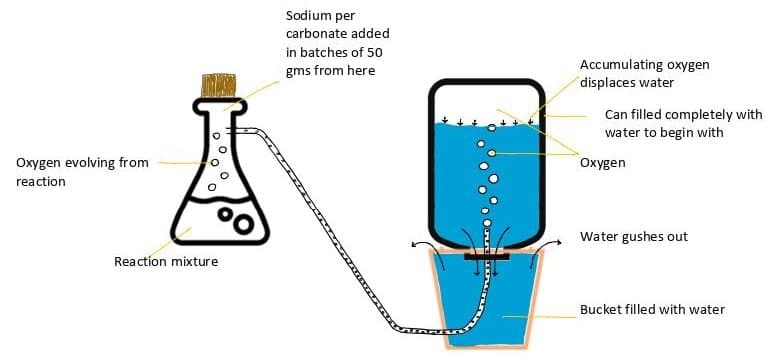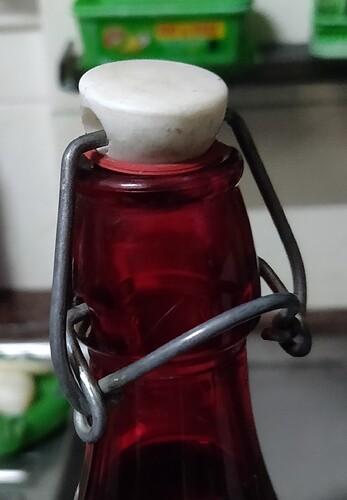This post is to update the process done so far.
At a time when inhaling with a high proportion of oxygen is becoming increasingly relevant for treating patients with covid, we have started exploring options that can be decentralized and enhance community capacity and know-how.
There are several DIY approaches, some of them listed in a previous thread here:
Chemical method
We are following a chemical process, while other teams are working on oxygen concentrators.
We managed to successfully generate oxygen as this video shows below.
https://badal.hbcse.tifr.res.in/index.php/f/191697
We used a 20litre mineral water bottle, filled it with tap water, and displaced water for the released gas, which is definitely oxygen (with some expected gases and humidity). The following reaction is used;
2Na_2CO_3⋅3H_2O_2→2Na_2CO_3+3H_2O_2
which is Sodium Percarbonate releasing hydrogen peroxide, and
2H_2O_2→2H_2O+O_2
hydrogen peroxide in turn releasing oxygen. We roughly calculated that more than 20 liters of oxygen can be generated from 200gms of the reagent. We used KMnO_4 to increase the rate of reaction.
Next Challenge
The released oxygen to be compressed in either oxygen cylinders when available, or a large size pressure cookers (we still need to design how to do this).
This post is also to keep tinkering on this part of the puzzle, viz., how to compress and deliver oxygen to the patients.
Parallel Challenges
DIY methods of making nasal canula. For example, see the following post:
If any of you are interested in supporting this, please reply below. We need people to document, write safety procedures to be followed, alert us about possible precautions to be taken, etc.
Testing the quality of oxygen generated: we need help in this. Go and look out for sensors, beg, borrow or bring as soon as possible.
At this moment we are focussing on compressing the gas into cylinders or pressure cookers, based on availability.
We will post updates as soon as possible.

